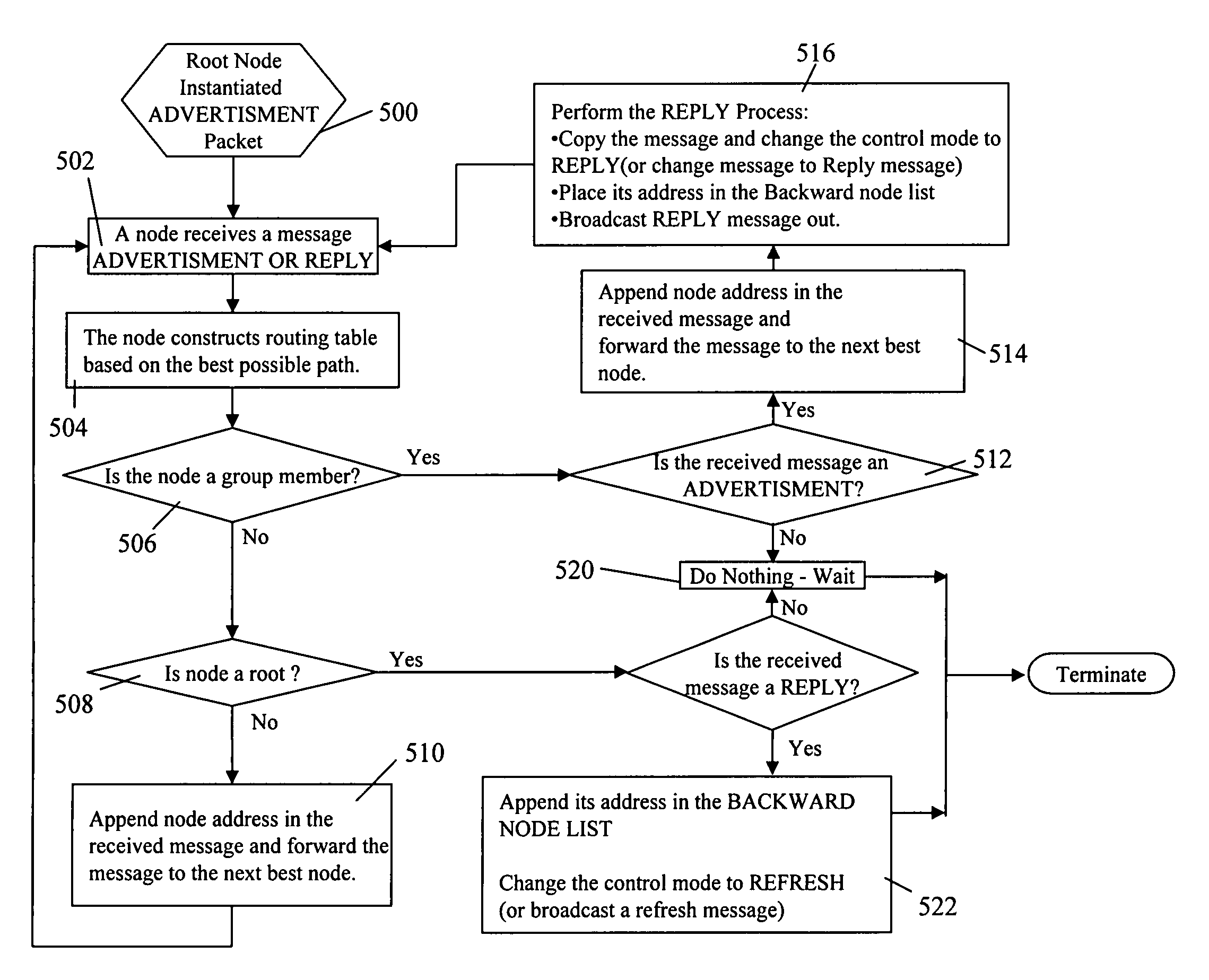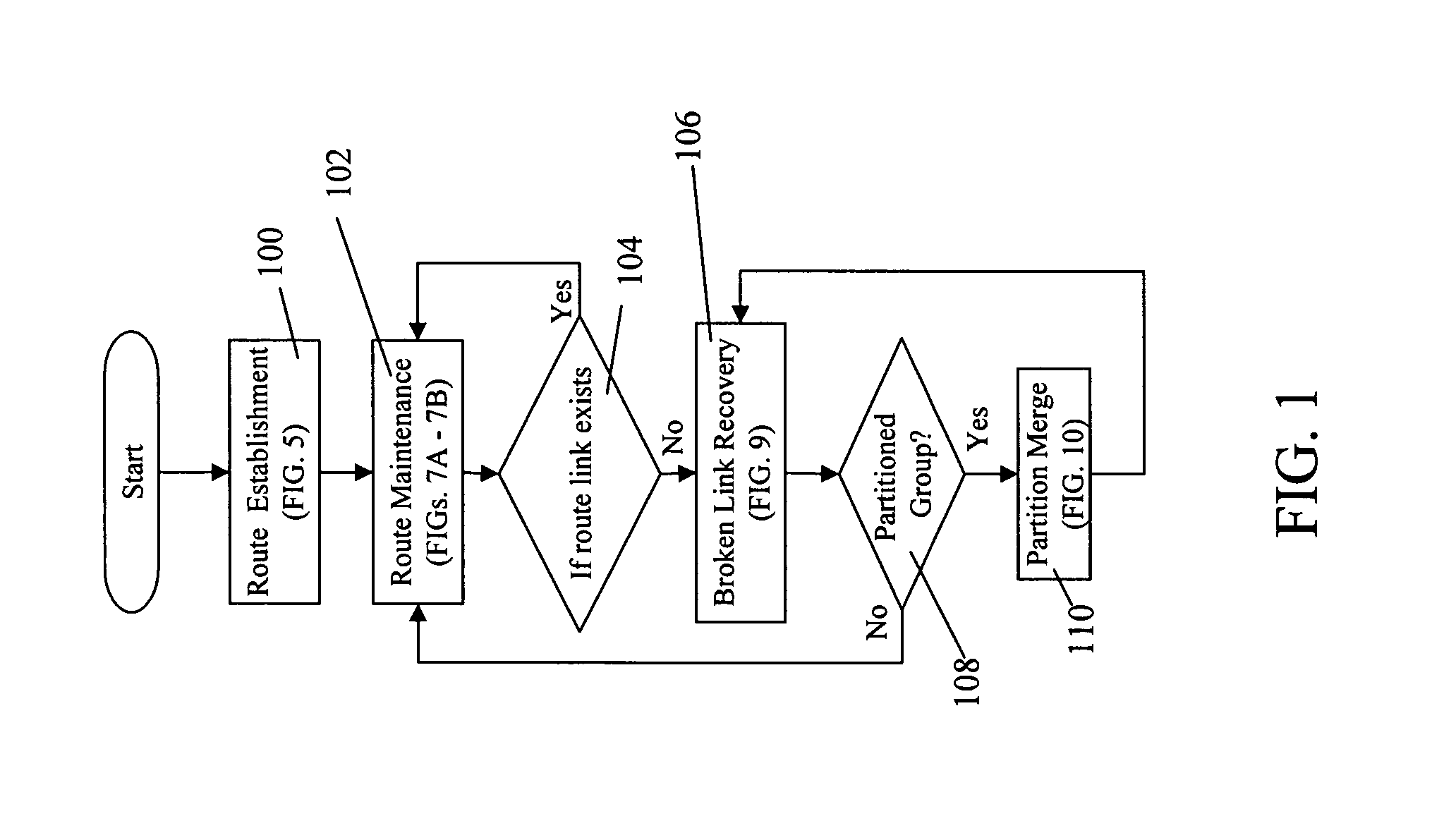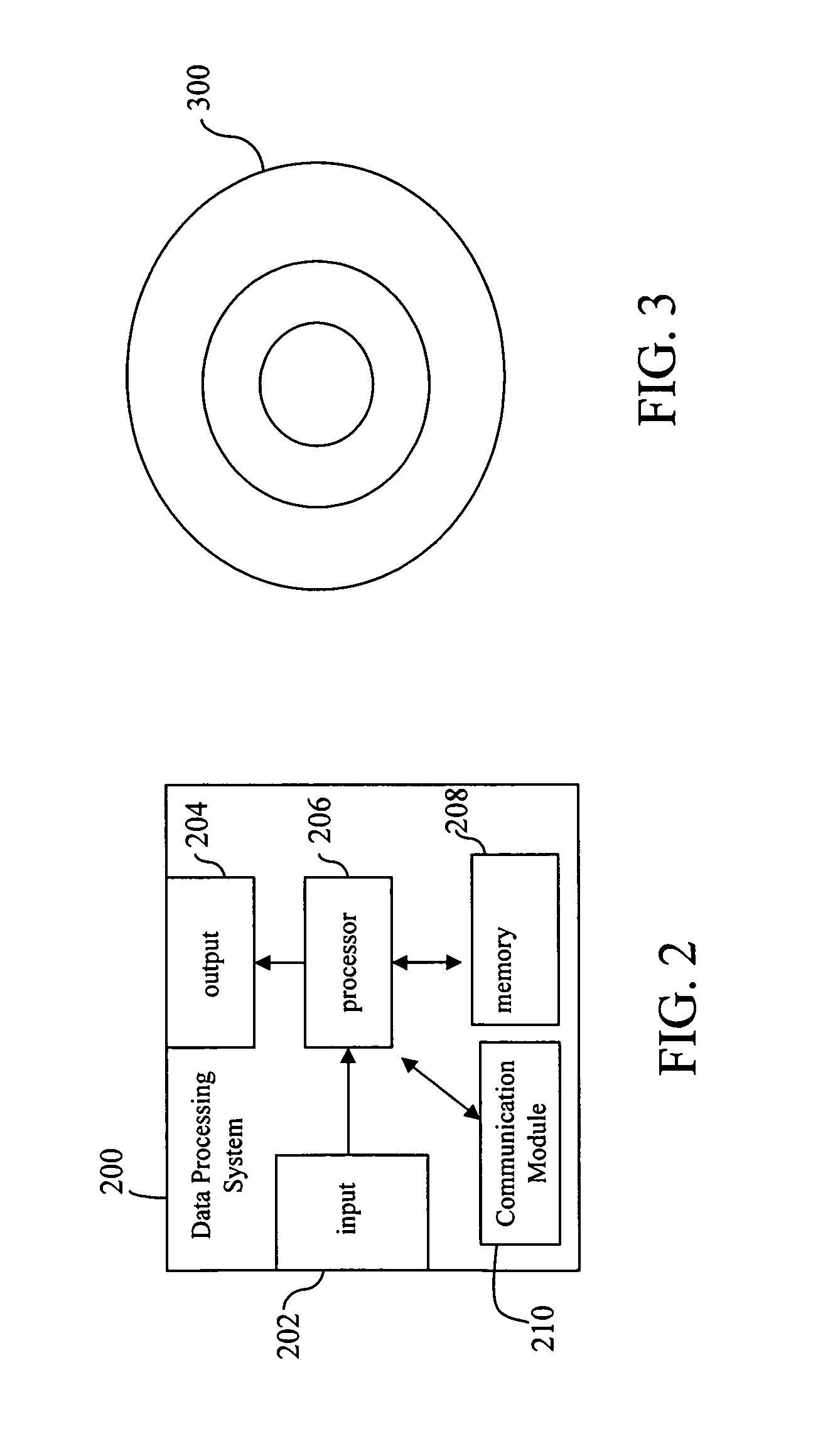Collaborative multicast routing (CMR) for multicasting in unidirectional, hybrid, multi-tiered mobile wireless network
a mobile wireless network and multi-tiered technology, applied in the field of mobile wireless communications, can solve the problems of large overhead of stored data, inability to repair multi-tiered networks, and high cost of resources, and achieve the effect of small overhead
- Summary
- Abstract
- Description
- Claims
- Application Information
AI Technical Summary
Benefits of technology
Problems solved by technology
Method used
Image
Examples
Embodiment Construction
(1) Introduction
[0057]Traditional multicast trees forward duplicate multicast packets on multicast point-to-point branches. Transmission of the same information from a node to a plurality of specified mobile wireless nodes (group of nodes) is very inefficient if the information is replicated for each group member at the source node, with all replications traveling throughout the network to reach each individual member node. In addition, most of the techniques that have been developed for multicasting datagram packets across networks to a group of destinations in one-to-many communications without any unnecessary packet duplication rely on assumptions of node homogeneity and unidirectional links. These methods would be of limited use for enabling multicasting in the Next Generation Internet (NGI) architecture.
[0058]The NGI comprises of a three-tier network structure with a super-high-speed fiber-optic core network as the first tier, with an exemplary gigabit to terabit bandwidth. Ran...
PUM
 Login to View More
Login to View More Abstract
Description
Claims
Application Information
 Login to View More
Login to View More - R&D
- Intellectual Property
- Life Sciences
- Materials
- Tech Scout
- Unparalleled Data Quality
- Higher Quality Content
- 60% Fewer Hallucinations
Browse by: Latest US Patents, China's latest patents, Technical Efficacy Thesaurus, Application Domain, Technology Topic, Popular Technical Reports.
© 2025 PatSnap. All rights reserved.Legal|Privacy policy|Modern Slavery Act Transparency Statement|Sitemap|About US| Contact US: help@patsnap.com



